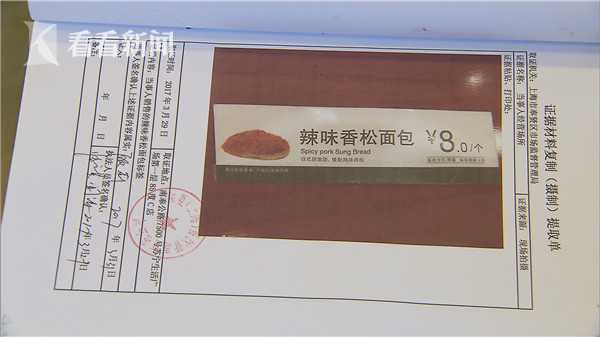
1. Enter "dxdiag" in the run. If a pop-upThe DirectX diagnostic tool dialog box prompts us whether we want to check. Click OK.
2. Check memory: 64-bit operating systems usually require a higher memory capacity to run, and it is recommended that you have at least 4GB of memory.
3. First, select "Computer" and right-click "Properties". You can see the digits of the computer operating system. You can also click "Start", enter "cmd" in the input box, and click "cmd application". Enter "systeminfo" in the cmd interface and press Enter. The digits of the operating system can be seen here.
4. Find the "Installed Memory (RAM)" column in the system information. If the memory capacity exceeds 4GB, the 64-bit operating system can be installed. Check hardware compatibility: Some older models of devices may not support 64-bit operating systems.
1. Right-click "Properties" on the desktop and a window titled "System Properties" pops up. Record whether your system is 32-bit or 64-bit information under the "General" tab. If your system is 64-bit, it will be clearly marked as "x64 Edition", otherwise your system will be 32-bit.
2. Step 1: Right-click "Properties" in "My Computer" on the desktop. Step 2: A window titled "System Properties" pops up, and record the information of whether your system is 32-bit or 64-bit under the "General" tab.
3. If you want to know whether your computer is a 32-bit system or a 64-bit system, you only need to check the system information. The steps are as follows: find "My Computer" on the desktop and click to select it. Right-click, select and click "Properties" in the pop-up menu.
4. Right-click "Properties" in "My Computer" on the desktop; a window with the title "System Properties" pops up, and record the information of whether your system is 32-bit or 64-bit under the "General" tab.
1, First, right-click "My Computer" and select "Properties". Open the system properties box, and then select "General". If it is not clearly marked with x64, it means that the computer is 32-bit. Method 2: Click "Start" and then select "Run". Enter "winmsd.exe" in the window and click OK.
2. Method 1: Start-Run Command Enter the sysdm.cpl or winmsd.exe command in the command box to view the system information. If possible, it will pop up in the system properties box.
3. Right-click "My Computer", "Properties" and "Device Manager" to see how many are under the "Processor" tab. If there are two, it is dual-core, and more than one is multi-core, such as 4-core, 8-core, so as long as it is dual-core and dual-core or above, it is a 64-bit operating system.
4. Check the computer configuration by entering the "dxdiag" command in the run; the specific steps are as follows: enter "dxdiag" in the run. If a DirectX diagnostic tool dialog box pops up, prompting us whether we want to check, click OK.
5. Check how many bit systems your computer is currently using. Take Windows 7 as an example. Right-click on the computer - Properties to view. In addition, a software is recommended, a green single file, which can clearly indicate the operating system digits of the current system.As shown in the figure, the software is divided into three parts, that is, the current system bits.
OKX Wallet Sign up-APP, download it now, new users will receive a novice gift pack.
1. Enter "dxdiag" in the run. If a pop-upThe DirectX diagnostic tool dialog box prompts us whether we want to check. Click OK.
2. Check memory: 64-bit operating systems usually require a higher memory capacity to run, and it is recommended that you have at least 4GB of memory.
3. First, select "Computer" and right-click "Properties". You can see the digits of the computer operating system. You can also click "Start", enter "cmd" in the input box, and click "cmd application". Enter "systeminfo" in the cmd interface and press Enter. The digits of the operating system can be seen here.
4. Find the "Installed Memory (RAM)" column in the system information. If the memory capacity exceeds 4GB, the 64-bit operating system can be installed. Check hardware compatibility: Some older models of devices may not support 64-bit operating systems.
1. Right-click "Properties" on the desktop and a window titled "System Properties" pops up. Record whether your system is 32-bit or 64-bit information under the "General" tab. If your system is 64-bit, it will be clearly marked as "x64 Edition", otherwise your system will be 32-bit.
2. Step 1: Right-click "Properties" in "My Computer" on the desktop. Step 2: A window titled "System Properties" pops up, and record the information of whether your system is 32-bit or 64-bit under the "General" tab.
3. If you want to know whether your computer is a 32-bit system or a 64-bit system, you only need to check the system information. The steps are as follows: find "My Computer" on the desktop and click to select it. Right-click, select and click "Properties" in the pop-up menu.
4. Right-click "Properties" in "My Computer" on the desktop; a window with the title "System Properties" pops up, and record the information of whether your system is 32-bit or 64-bit under the "General" tab.
1, First, right-click "My Computer" and select "Properties". Open the system properties box, and then select "General". If it is not clearly marked with x64, it means that the computer is 32-bit. Method 2: Click "Start" and then select "Run". Enter "winmsd.exe" in the window and click OK.
2. Method 1: Start-Run Command Enter the sysdm.cpl or winmsd.exe command in the command box to view the system information. If possible, it will pop up in the system properties box.
3. Right-click "My Computer", "Properties" and "Device Manager" to see how many are under the "Processor" tab. If there are two, it is dual-core, and more than one is multi-core, such as 4-core, 8-core, so as long as it is dual-core and dual-core or above, it is a 64-bit operating system.
4. Check the computer configuration by entering the "dxdiag" command in the run; the specific steps are as follows: enter "dxdiag" in the run. If a DirectX diagnostic tool dialog box pops up, prompting us whether we want to check, click OK.
5. Check how many bit systems your computer is currently using. Take Windows 7 as an example. Right-click on the computer - Properties to view. In addition, a software is recommended, a green single file, which can clearly indicate the operating system digits of the current system.As shown in the figure, the software is divided into three parts, that is, the current system bits.
OKX Wallet apk download latest version
author: 2025-02-28 07:56 OKX Wallet download
OKX Wallet download
876.35MB
Check OKX Wallet
OKX Wallet
771.43MB
Check Binance download
Binance download
152.41MB
Check Binance login App
Binance login App
457.74MB
Check OKX Wallet extension
OKX Wallet extension
269.98MB
Check OKX Wallet apk download
OKX Wallet apk download
849.46MB
Check Binance wikipedia
Binance wikipedia
355.69MB
Check Binance wikipedia
Binance wikipedia
817.64MB
Check Binance app
Binance app
144.49MB
Check Binance US
Binance US
439.25MB
Check OKX Wallet Sign up
OKX Wallet Sign up
727.65MB
Check Binance app
Binance app
466.79MB
Check Okx app download
Okx app download
866.24MB
Check Binance wikipedia
Binance wikipedia
259.49MB
Check OKX Wallet extension
OKX Wallet extension
452.37MB
Check Binance download iOS
Binance download iOS
257.69MB
Check Binance Download for PC
Binance Download for PC
537.96MB
Check Binance login App
Binance login App
156.76MB
Check Okx app download
Okx app download
111.43MB
Check Binance Download for PC Windows 10
Binance Download for PC Windows 10
785.17MB
Check Binance US
Binance US
664.97MB
Check OKX Wallet APK
OKX Wallet APK
369.88MB
Check OKX Wallet app download for Android
OKX Wallet app download for Android
956.12MB
Check Okx app download
Okx app download
571.84MB
Check okx.com login
okx.com login
473.49MB
Check OKX review
OKX review
626.38MB
Check OKX Wallet extension
OKX Wallet extension
781.54MB
Check Binance wikipedia
Binance wikipedia
515.67MB
Check Binance exchange
Binance exchange
881.14MB
Check Binance app
Binance app
215.68MB
Check OKX Wallet extension
OKX Wallet extension
595.13MB
Check okx.com login
okx.com login
162.69MB
Check Binance app
Binance app
918.72MB
Check Binance login
Binance login
159.89MB
Check Binance wikipedia
Binance wikipedia
758.84MB
Check Binance login
Binance login
491.61MB
Check
Scan to install
OKX Wallet Sign up to discover more
Netizen comments More
1234 闲花野草网
2025-02-28 08:23 recommend
2485 下笔如神网
2025-02-28 08:10 recommend
218 降尊纡贵网
2025-02-28 07:53 recommend
2815 亡国之音网
2025-02-28 07:47 recommend
2817 计穷力竭网
2025-02-28 07:07 recommend